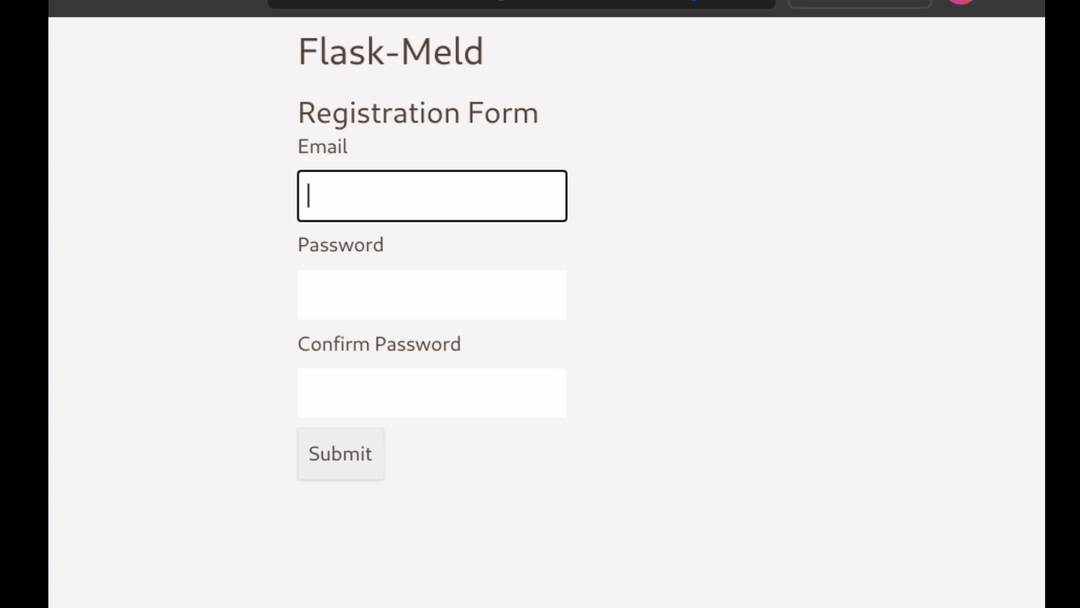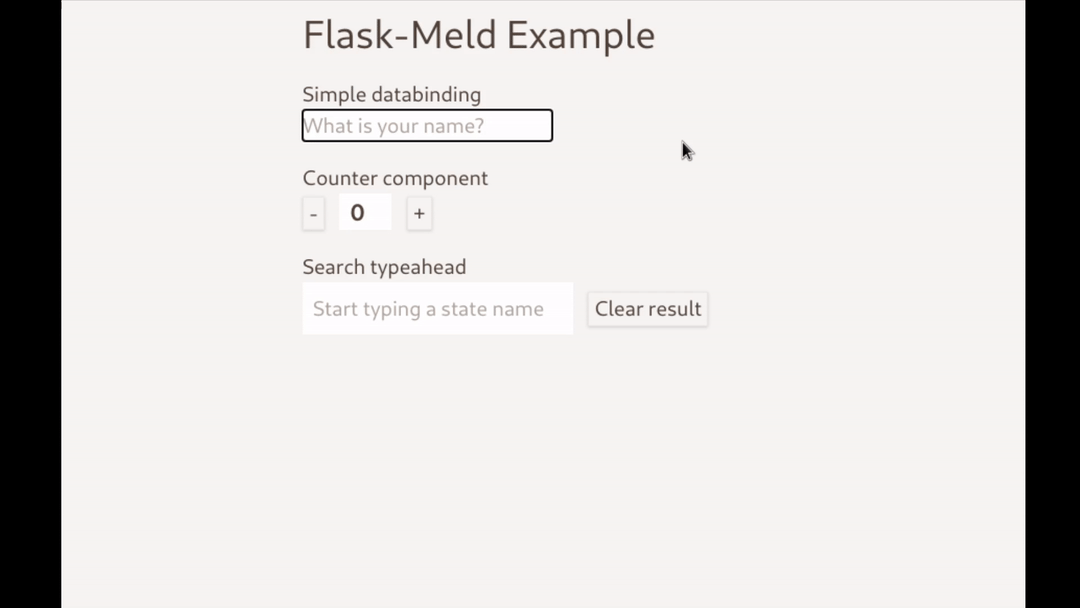Form Validation With Flask-Meld
Posted on Fri 18 December 2020 in flask-meld • Tagged with python, Flask-Meld, Flask-WTF, Flask, WTforms, Meld
Real-time form validation with Flask-Meld
Flask-Meld now integrates with Flask-WTF to handle form validation.
What's the big deal? Real-time form validation without writing any Javascript!
Of course I wouldn't leave you hanging without a way to try it yourself! Here's a link to the demo
Building your form
While you …
Continue reading



